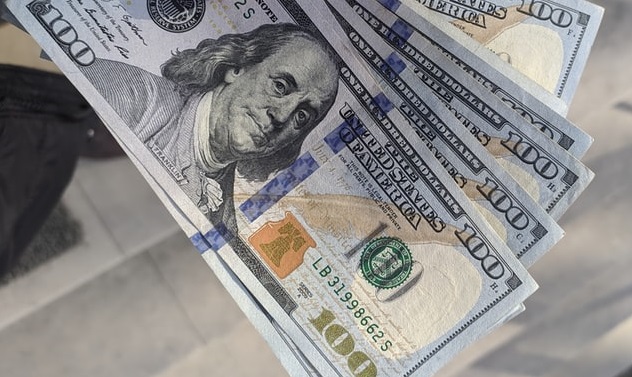Yesterday was a volatile session for US equity markets, with major indices falling back sharply after the open amid what traders cited as profit-taking with stocks at record high levels, only for investors to gobble up the dip and for the entire move lower to have pretty much reversed by the close of trade; that saw the S&P 500 swing from above 4200 to under 4170 back to close above 4200 again. Profit taking appears to have resumed overnight, however, and E-mini S&P 500 futures have ebbed back under 4200 and currently trade in the 4180s, down about 0.5% ahead of the final session of the month. That means the index still stands to gain about 5.5% on the month, however. Amazon earnings blew expectations out of the water last night but have failed to boost the index this morning.
Turning to commodities; crude oil prices are seeing a fairly sharp pull back, with traders citing US/Iranian negotiation commentary as weighing, with both the US and Iran having expressed cautious optimism as of late that a deal can be reached in the coming weeks that might pave the way for a removal of sanctions and the reintroduction of Iranian crude oil exports to global markets once more – two points on this, however; 1) Iran has continued to export large quantities of crude oil, particularly to China, despite US sanctions and 2) other OPEC+ producers are likely to factor in an increase in Iranian output to their output cut agreement (essentially meaning the rest of OPEC+ might cut output a little to make up for higher Iranian production). Still, news of a deal reduces geopolitical risk premia (i.e. the risk of a US/Iran war) and will certainly be seen as a crude oil negative.
In terms of precious metals, spot palladium hit the $3K mark for the first time ever, with newswires citing worries about a shortage of the metal embedded by automakers in exhaust pipes to neutralise emissions. Reuters quotes UBS analyst Giovanni Staunovo; “Palladium has been in a structural deficit for 10 years. We have seen above ground inventories falling to very low levels… (Palladium) can be very illiquid and this is making the moves even more crazy. This rally can continue, particularly if car sales start to improve.” Meanwhile, spot gold and spot silver both trades subdued in the respective $1770 and $26.00 areas amid equally subdued conditions in US government bond markets. On which note; 10-year TIPS yields (the inflation expectation adjusted yield on 10-year US government bonds) are rangebound just above the -0.80% mark and nominal 10-year yields are going sideways in the mid-1.60s%. Month-end flows may yet shake things up a little.
Speaking of month-end flows; calls for USD weakness seem yet to come into fruition with the US Dollar Index (DXY) up about 0.3% on the day, though unable to recover all the way to the 91.00 level, meaning the index is yet to recoup all of its post-dovish FOMC losses that saw it decline all the way from its 91.128 peaks on Wednesday. On the week, the DXY is currently bang on flat, meaning the buck might be about to snap what would have been a four-week losing streak.
In terms of the rest of the G10 currencies; softer crude oil prices are taking their toll on the NOK and SEK, both of which are down about 0.4% on the session versus the buck, with weakness being seen in the former despite a surprise decline in Norwegian unemployment to 4.0% and a surprise rise in the Norwegian Credit Indicator to 5.0% in March from 4.9% the month prior. On the contrary and despite weakness in crude prices that would typically take their toll on the Loonie, CAD continues to perform well as traders continue to sight ongoing support for the currency in wake of this month’s comparatively hawkish vibes from the Bank of Canada (that puts the bank on course to start raising rates ahead of the Fed) and recent strong data (retail sales on Wednesday). USDCAD trades flat on the day in the 1.2275 area, as the pair continues to probe multi-year lows.
Sticking with the G10 outperformers; JPY is the best performing currency (just ahead of USD and CAD) and sit atop the G10 rankings, seemingly deriving some traction amid safe-haven demand as downside is seen in global equity markets. USDJPY is currently trading with a modestly negative bias and appears to be eyeing a move back to session lows in the low 108.70s amid plenty of supply ahead of the 109.00 figure. Perhaps the currency is also deriving some traction in wake of a significantly better than anticipated preliminary Industrial Production release for the month of March which had production rising 2.2% MoM versus forecasts for a drop of 2.0%. Other Japanese data was also strong, with the unemployment rates dropping unexpectedly to 2.6% from 2.9%, the jobs/applicants ratio rising unexpectedly to 1.10 from 1.09, April manufacturing PMI rising to 53.6 from 52.7 and March Housing Starts growing 1.5% MoM versus forecasts for a 7.4% MoM decline.
Meanwhile, there has also been a barrage of data released in the Eurozone, with individual countries releasing a mix of preliminary April CPI and Q1 GDP growth results ahead of the release of Eurozone aggregate figures for both metrics; the preliminary estimate of headline Eurozone CPI for the month of April rose to 1.6% from 1.3% as expected. Eurozone GDP data for Q1 2021 was a little better than expected, however, with the economy of the monetary union shrinking 0.6% on the quarter (versus forecasts for a QoQ decline of 0.8%). That meant the Eurozone economy was 1.8% smaller in Q1 2021 than it was in Q1 2020, less than forecasts for a 2.0% YoY decline. The Eurozone unemployment rate for the month of March was also released and showed a surprise drop to 8.1% from 8.2% the month prior. However, EUR has failed to take advantage of the above noted decent data, with the currency the third worst performer in the G10 after NOK and SEK, down over 0.2% on the session versus the buck, meaning EURUSD has slid back under 1.2100 and currently trades in the 1.2080s (still a decent amount above Wednesday’s lows in the 1.2050s).
Finishing up the brief by taking a look at the remain G10 currencies; some divergence is being seen between AUD and NZD, with the former holding up well and trading relatively flat versus the buck on the day (corresponding to AUDUSD remaining fairly well supported above 0.7750), while the latter is doing a little worse and is down over 0.2% on the session versus the US dollar (NZDUSD is probing Thursday’s 0.7220 lows). The former seems to be deriving some support amid strength in copper prices (which are up 0.7% on the session). Neither seem to have paid much head to slightly softer than expected Chinese PMIs for the month of April released overnight (aside from Caixin Manufacturing PMI, which was a little better than expected) – all still remained in expansionary territory and CNH does not seem to be concerned and is flat on the day versus the dollar. There is not too much to talk about for GBP and CHF, meanwhile, aside from a big (and expected) bounce in Swiss retail sales as March as pandemic restrictions were unwound and a much better than forecast Swiss KOF Leading Indicator figure for April; both modestly lower on the day versus the dollar with GBPUSD having recently bounced at the 1.3900 mark and USDCHF still caught within tight 0.9080-0.9100 ranges.
The Day Ahead
US March PCE and Core PCE numbers are set for release at 1330BST, the latter of which is the Fed’s preferred measure of inflation. Alongside the inflation release, Personal Income and Spending data for the month of March is also out and both should show a sizeable bump given the $1600 stimulus cheques sent to each American in the month. Also at 1330BST, Canadian Producer Price Inflation data is out, though is unlikely to cause too much of a stir. FOMC member Kaplan will be speaking at 1445BST, followed by the release of the final estimate of Consumer Sentiment from the University of Michigan for April month. All in all, it ought to be a quiet week, as traders mull the implications of this week’s barrage of news (Fed meeting, Biden’s American Families Plan announcement, US and global GDP data, EU inflation etc…). Month-end flows may cause a bit of a stir, but much of the activity may have already occurred at the start of the week/end of last week ahead of the aforementioned key risk events.




